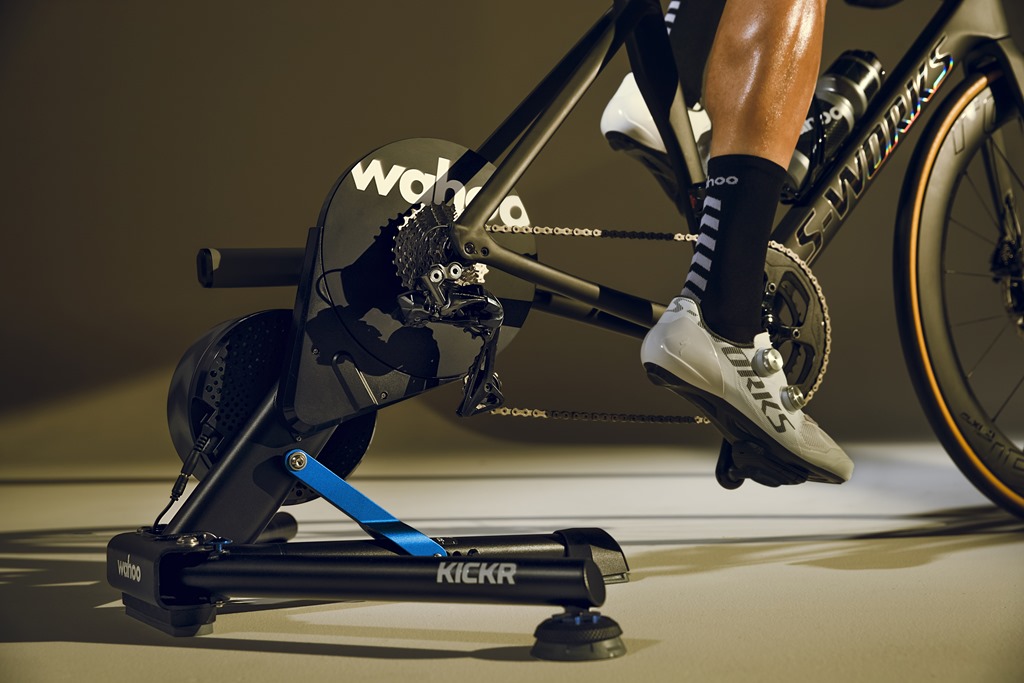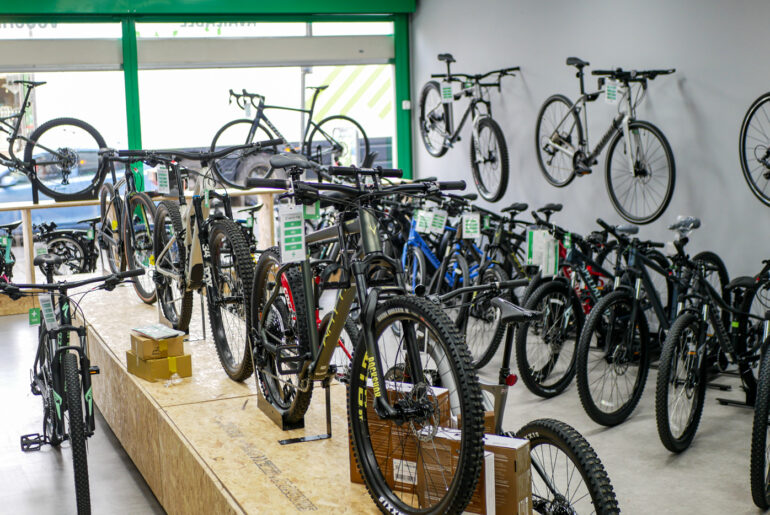With dropping temperatures come questionable riding conditions. Riding outdoors is still king to us – bikes are for getting out there after all – but if you’re looking to maintain peak form through the off-season, the turbo will be making an appearance. Hitting those intervals indoors is a lot safer when it’s bucketing down outside!
Setting your indoor training kit up just right can make or break your off-season and, whether you have the luxury of a dedicated shed-quarters or simply a hard-won corner of the bedroom, we have some tips to help you along.
Turbo Trainer
You won’t get far without a turbo trainer (OK, you don’t go anywhere with one either but the point stands). The technology behind these vital pieces winter training kit has come on leaps and bounds over the past few years. “Smart” systems are now the standard, enabling training apps to control the resistance of your trainer for a more engaging and realistic experience.
Wahoo is a brand pretty firmly positioned at the front of the smart training and rider data game, and they are our go-to supplier for all things pain cave. The smart connectivity allows you to train with Zwift, Wahoo’s own SYSTM (formerly Sufferfest), or Trainer Road – plus if you use a Wahoo GPS, you can relive your usual training loop from the warmth of the indoors! The range really merits an article all of its own, but here’s a quick rundown:
The most wallet-friendly way into the Wahoo training ecosystem is the Snap. The flywheel provides realistic and quiet resistance that can adjust automatically to simulate gradients of up to 12%. NOTE: Be sure to pick up a trainer-specific tyre if you don’t already have one.
This no-frills version of Wahoo’s trademark turbo trainer offers the benefits of direct-drive (more accurate data, improved resistance range, near-silent operation) without the bells and whistles featured on the flagship model.
As above, but with the ride-feel accoutrements that made the Kickr headline news when it was first released. Moving feet, that Wahoo have entitled the AXIS system, provide 5 degrees of side-to-side movement to simulate the response of the bike in real-world situations. This reduces unnatural fatigue, allowing you to train harder for longer. It’s all about results!
The pièce de résistance: this ultimate indoor training tool provides an unbeatable simulation of real-world riding. One of the standout features is the range of gradient simulation, from +20% right down to -15%. For the downhills, there’s even a braking feature for a totally realistic experience on virtual rides.

Screen If You Want To Go Faster !
Turbo sessions have long been associated with dull hours of punishment but in the age of virtual training tools that’s no longer the case – it’s a game! In fact, with the plethora of POV ride footage available on Youtube, even if you’re sticking with an analogue, old-school turbo, your new pain cave wil benefit a screen. Find a suitable desk to position your laptop or tablet: the considerations are a little different to usual here, as you’ll be looking for extra height and ideally a minimal footprint. Being able to position the screen somewhere you can see and control without straining is key to an uninterrupted training experience. There are quite a few laptop risers on the market that can convert an existing desk to the perfect thing, or Wahoo also offer a purpose-built option with a few neat features such as the phone/tablet stand.
Don’t Sweat It
This section is particularly important if you have your Summer Best Bike set up on the turbo during the winter months, but is applicable for any pain cave pedaller. Salty water will destroy your components, and sitting on the turbo for an hour or so will usually generate quite a bit. Ensure you have a couple of microfibre towels on hand, and we’d recommend pulling the full John McEnroe. Sweatbands might be a bold look, but even if you’re not a fan your friendly local bike mechanic will appreciate it next time they change your bar tape! Bike- and rider-care experts Muc-Off offer a whole range of products specifically aimed at indoor training which is well worth a browse. There’s even an under-bike mat, which really earns its place in the cave if you’re stuck with a more absorbent flooring material than you might otherwise choose!
Cooling Is Key
Inputting the same effort as outdoors, minus the breeze created as the countryside scrolls by, can result in one very hot cyclist. A decent fan makes a world of difference. If possible, find a blower-type fan as opposed to one using blades – these create a more focussed blast of air that is better suited to a static body that needs cooling down. Wahoo’s HEADWIND fan rather neatly tucks into the wider range of products to automatically adjust according to your effort, which is a nice touch.
Hydration Station
We’ve already touched on the capacity for your body to expel water during a turbo session. Unsurprisingly, this water needs to be replaced. If you have a parts-bin build as your turbo bike, be sure not to leave off the bottle cages – and don’t scrimp on replacing the salts either. If you usually ride with hydration tablets or powder in your bottles, it’s well worth sticking to the habit when you hit the turbo, it’s no less serious a prospect simply because you never leave home! If you are short on bottle cages, that desk we discussed earlier should be in easy reach. Just be careful as those electronics and water don’t mix!

Pro Tip: An important consideration is that your drinking habits may need to be a little more deliberate. There are natural pauses out on the road, and by reflex, this is when you reach for your bidon. On the turbo? Not so much. Be sure to keep drinking regularly.
If you’d like to know more about how to get the most from your indoor training sessions, or take a closer look at some of the equipment, visit our Storrington branch. You can even give our demo Kickr Bike a test ride!




